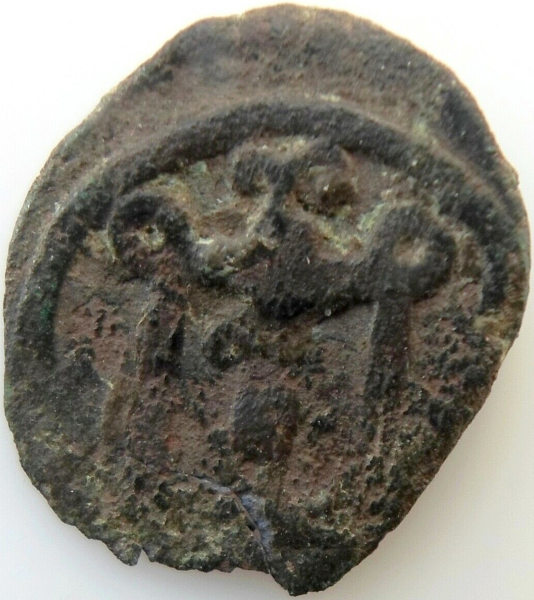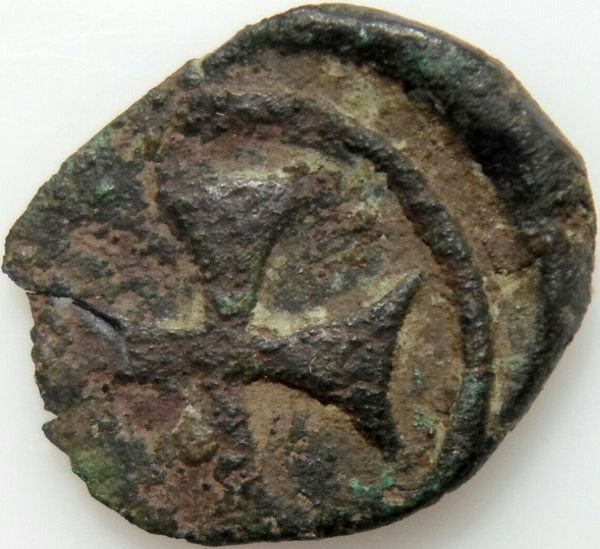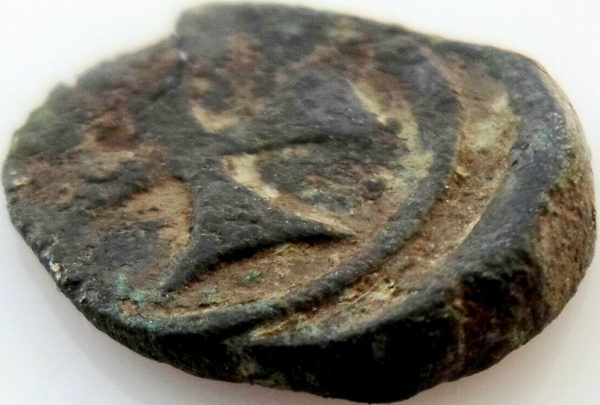
|
Genoese coin struck at Chilia |
|

|

|
|
diameter ? mm, irregular, 1.61 g, AE Obverse tamga of an unidentified ruler, outer linear circle | Reverse Maltese cross, outer linear circle |

The pictures of the coins were taken from E-bay, through the kind permission of an anonymous donor.
About the Coins Struck at Chilia
Genoese Republic (established in the 11th century A.D., dissolved in 1815) was a maritime republic and a major commercial power in the Mediterranean Sea and Black Sea. Genoa founded several colonies and trade posts (emporia), as well within the Black Sea areas ruled by the Golden Horde (the best known being Kaffa in Crimea). After 1361 the Golden Hord entered a major crisis, and several separatist states appeared in the region of the lower Danube. In these conditions the Genoese struck various local coins bearing Christian symbols but also the tamgha of the local Mongol ruler.
The first signaling of two such coins possibly, struck by the Genoese somewhere in the Dobrogea area was made in 1958 [4], in the article "Însemnări privitoare la descoperiri monetare (II)" (Notes on Monetary Findings), published in the volume "Studii și cercetări de numismatică 2" (Numismatic Studies and Researches) by the Romanian numismatist Octavian Iliescu (1919-2009) [2]. The coin type presented on this page is described as follows: "On the 6th of September 1942 two small bronze coins were found in the rubble, in the ruins of the fortress of Enisala, under a corner of a stone that flipped. [...] the other has a simple cross on the obverse, on the reverse a castle (?), both sides being deprived of any legend".
The attribution of these very rare coins (it seems that only a few dozen are known - in [4] are mentioned only 15, from which 13 were found at Enisala) to a local mint run by the Genoese was made in 1981 by Oberländer-Târnoveanu [2]. Most probably the coins were struck sometimes during the 1360 - 1380 period.
The representation of the coin looks quite similar with the city gate represented on medieval Genoese coins. In medieval Latin Genoa was called Ianua, meaning gate. At that time, it was believed that Genoa has been founded by a legendary Ianus. This representation was interpreted as a tamgha belonging to an unidentified Mongolian ruler [4]. The cross on the other side resembles the cross that appears on Genoese coins of the time. Based on these arguments, it was thought that the pieces were struck by the Genoese.
It is not known where these coins were struck. Perhaps at Enisala, where most pieces were discovered (following archaeological excavations). Perhaps at Chilia (as is conventionally accepted today [3], and where such a coin was found [2]), perhaps at Licostomo. Considering that the average mass of the 12 coins studied is 0.77 g [4] and that, based on the rarity, it was assumed that only a few tens of thousands of pieces had been struck and circulated in a restricted area [4], it cannot be totally excluded that these coins have been manufactured elsewhere and then transported here.
It should also be said that on the Internet there is at least one a very similar coin, having clearly represented the Genoese fortress gate, which is attributed to Kaffa mint [5].
References
1. Iliescu O., Însemnări privitoare la descoperiri monetare (II). Studii și cercetări de numismatică 2 (SCN 2), Editura Academiei Republicii Populare Romîne, București, 1958, p. 456.
2. Iliescu O., Génois et tatars en Dobrudja en XIVe siècle: l'apport de la numismatique. Études byzantines et post-byzantines III, Editura Enciclopedică, București, 1997, p. 161...178.
3. Dincă C., Emisiuni monetare medievale din Dobrogea, regiunea Dunării de Jos și zona litoralului Mării Negre (1270-1388, 1435-1440, 1460-1480) - catalog., 26 p., retrieved July 2019.
4. Oberländer-Târnoveanu E., The coinage of the Genoese settlements of the western Black Sea shore and on the Danube. PEUCE II (XV), Tulcea, 2004, p. 285-296.
5. *** NumisMall, Genoese anonymous follaro from Caffa, Crimea. retrieved July 2019.
|
Back to selection page!
|